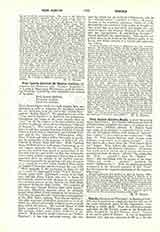

Venosa, Diocese of (VENUSIN.), in Southern Italy. The city is situated on a high precipitous hill, one of the most advanced posts of the Apennines, overlooking a fertile plain. Near its sixteenth-century cathedral, the SS. Trinita, stands an old Benedictine abbey founded by the first Norman counts. Venosa is the native place of Horace. It was an important Samnite city, and was captured in 291 B.C. by the Romans, who made it a Latin colony. It resisted Hannibal in the Punic War, and during the Civil War was stormed by Metellus. It was flourishing as late as the fourth century. Among its antiquities is a Jewish cemetery. The earliest events at Venoza are the martyrdoms of the Twelve Brothers (286) and of Felix, Bishop of Tabara in Africa, and his companions (303). Stephanus (498) is the first Bishop of Venoza whose date is known accurately. The names of other bishops up to the Norman conquest have not been preserved. Buono (1223) was assassinated by a cleric; Lamberto Arbaudo (1509) embellished the cathedral, which was demolished a little later to permit the erection of fortifications. In 1818 the See of Lavello, suffragan to Bari, founded in 1042 when the Norman count Arnichino fixed his seat at Lavello, was united to Venosa. The diocese is suffragan to Acerenza and contains 8 parishes, 48,300 inhabitants, 54 secular priests, and 2 convents of nuns.
U. BENIGNI

